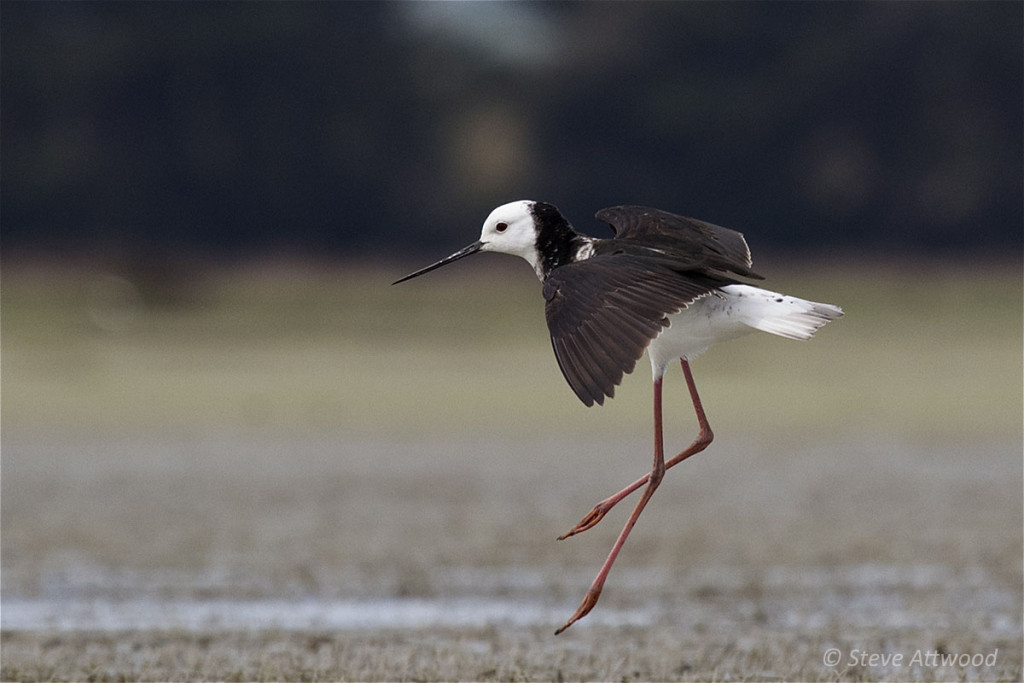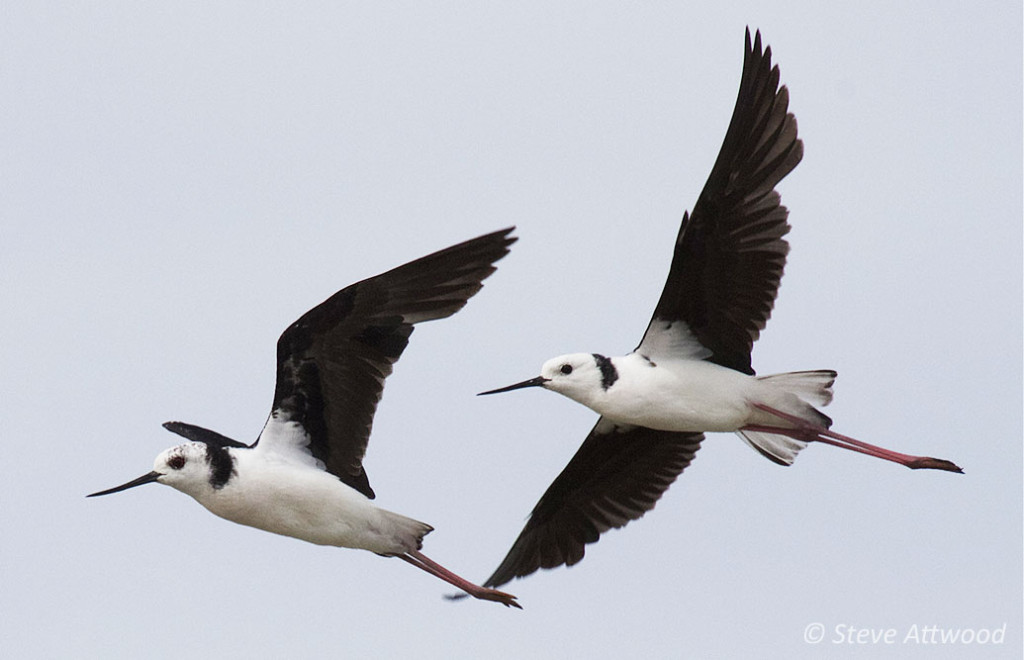Pied stilt | poaka
Status: Declining

The pied stilt | poaka is often seen with other wading birds, particularly with the critically endangered black stilt | kakī and South Island pied oystercatcher | tōrea.
Lowland birds start moving towards their breeding sites along braided rivers June-July each year.
Inland birds start later in August-October.
Description
Believed to have arrived in New Zealand in the early 1800s, the pied stilt (Himantopus leucocephalus) poaka (Māori) measures 35cm and weighs 190gm. Occasionally a single pair will nest alone, but usually they breed in colonies. They will breed with black stilt | kakī, producing hybrids.
A compact, black-and-white stilt with long red legs and a long fine pointed black bill. Adult hybrid stilts have a black band of variable width across the breast. This can sometimes lead them to be mistaken for black stilt | kakī juveniles.
Their eggs are khaki-coloured with dark brown blotches.

More information
- NZ Birds online (includes photos, sounds)
- NZ Birds
- iNaturalist
- iNaturalist: hybrids
Conservation efforts
While they are a protected species and their overall numbers are declining, there is some concern around their breeding with kakī | black stilt, creating hybrids. While hybridisation can be regarded as a rapid form of adaptation under changing environmental conditions, this may not be the case with pied-stilt | poaka. See the research below or information on black stilt | kakī on this website.
References and research
- See also Ecology/further information and references
- 2019: Galla et al; Reference Genomes from Distantly Related Species Can Be Used for Discovery of Single Nucleotide Polymorphisms to Inform Conservation Management Genes 2019, 10 (1), 9
- 2019: See also Genes Special Issue “Conservation Genetics and Genomics“
- 2017: Forsdick; Genome analysis of hybridisation between Kakī (Black Stilt) and Poaka (Pied Stilt) (BRaid seminar)
- 2011: Hagen et al; Conservation Genetic Management of A Critically Endangered New Zealand Endemic Bird: Minimizing Inbreeding In The Black Stilt (Himantopus novaezelandiae). The International Journal of Avian Science 153(3):556-561
- 2008: Steeves et al; Development of Polymorphic Microsatellite Markers For The New Zealand Black Stilt (Himantopus novaezelandiae) and Cross-Amplification In The Pied Stilt (Himantopus himantopus leucocephalus). Molecular Ecology Resources 8(5):1105-110
- 2005: Cameron et al; Improving predator capture rates: analysis of river margin trap site data in the Waitaki Basin, New Zealand New Zealand Journal of Ecology (open access PDF)
- 2002: Sanders & Maloney; Causes of Mortality At Nests of Ground-Nesting Birds In The Upper Waitaki Basin, South Island, New Zealand: A 5-Year Video Study. Biological Conservation 106(2):225-236
- 2001: Maloney & Murray; Kaki (Black Stilt) Recovery Plan 2001–2011. Department of Conservation, Wellington.
- 1999: Wallis; Genetic status of New Zealand black stilt (Himantopus novaezelandiae) and impact of hybridisation (DOC technical report)
- 1997: Millar et al; Captive Management and Molecular Sexing of Endangered Avian Species: An Application To The Black Stilt Himantopus novaezelandiae and Hybrids. Biological Conservation 82(1):81-86
- 1996: Pierce; Ecology and Management of The Black Stilt Himantopus novaezelandiae. Bird Conservation International 6(01):81-88.
- 1986: Pierce; Foraging responses of stilts (Himantopus spp.: Aves) to changes in behaviour and abundance of their riverbed prey New Zealand Journal of Marine and Freshwater Research (open access PDF)
- 1986: Differences in Susceptibility to Predation Between Pied and Black Stilts (Himantopus spp.). Auk 103(2): 273-280.
- 1984: Pierce; Plumage, Morphology and Hybridization of New Zealand Stilts Himantopus spp. Notornis 31(1): 106-130.
- 1982: Pierce; Comparative Ecological Study of the Pied and Black Stilts in South Canterbury. PhD thesis. University of Otago, Dunedin, New Zealand.
